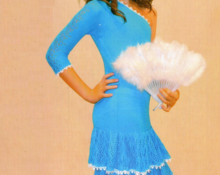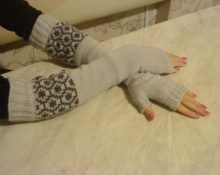The Asian spikelet is a pattern with which needlewomen knit very beautiful and cozy things using knitting needles and special knitting machines. An unusual pattern of this type can be used to knit almost everything from children's scarves to chic sofa blankets.
Features of making an Asian spikelet on a knitting machine

Before you start working on your intended product, you need to make all the necessary preparations to ensure quick and trouble-free knitting. The first thing you need to do is purchase yarn. For machine knitting, regular yarn is suitable, which is used for knitting or crocheting. Thread density is determined based on the capabilities of the sewing machine. For example, for “Silver Reed 840” you can safely purchase threads with a thickness of 300 to 600 m/100 g. When working with thicker yarn, the finished products turn out to be too dense and tight. An Asian spikelet, knitted from a thread of such density, loses its external airiness and softness.
Attention! Yarn is usually sold in bulk skeins, which are rewound into bobbins using a special winder (manual or electric) to ensure unhindered flow of thread to the needle. Balls wound by hand are not suitable for use with knitting machines.
It is also necessary to stock up on edge weights that prevent the outer side threads of the fabric knitted with an Asian spikelet or any other pattern from flying off the needles. The loads are hung manually on both sides of the canvas. On single-pound machines, the Asian spikelet is knitted without additional entwining of needles with thread, by partial knitting. If the canvas is not too wide, in this case it can be pulled back by hand without using weights.
How to make an Asian spikelet on a knitting machine

Having prepared the workplace properly, you can begin to work. It is important not to forget to check the correct position of the needles, whether there are any unknitted loops and whether there is enough thread on the bobbin to knit the next row.
Advice! Skeins on which the thread is almost finished are placed in deep metal bowls and pans so that they do not “jump” on the table and roll off it.
Often colorful and bright things are knitted with the Asian spikelet, such as the Lalo cardigan. Soft gradients or clear transitions - the choice of colors depends on the taste of the needlewoman or the desire of the customer (in cases where the item is knitted for sale). If you don’t know all the intricacies of the process, then knitting with threads of different colors is quite difficult. Let's consider a step-by-step algorithm for knitting an Asian spikelet using multi-colored yarn:
- The first 2-3 rows are knitted with an additional thread.
- The next two are with yarn of the main color.
- Needles (8 pcs.), left in working position (RP).The rest continue to be in the anterior non-working position (FNP).
- The next 10 rows are sewn using 8 needles.
- Next, 2 pairs of needles are moved into the RP on the left.
- After this, the right 4 needles located at the edge of the fabric are set to the non-working position and again knit 10 rows, using 4 pairs of needles.
- Once 10 rows are ready, the 4 needles located on the left are again moved to the working position and the row is knitted.
- After this, everything is repeated starting from point No. 4.
- In this way, the row is completed to the end, after which all the loops are moved into the RP and knitted along the entire length of 4 rows.
- Then they do everything again, but you need to move from left to right.
Knitting using a machine significantly saves the needlewoman’s time and energy. Among those who knit or crochet, the Asian spikelet is considered a rather complex pattern, accessible only to advanced-level craftswomen. At the same time, even a beginner who has no experience in this can quickly master it on a knitting machine.


 0
0





